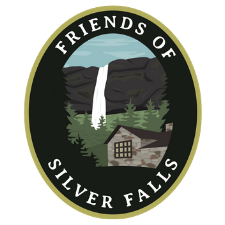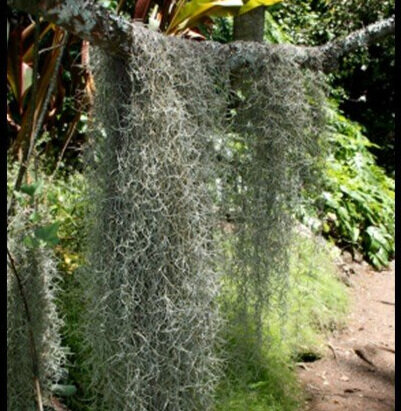by Kim Maley, Park Interpreter
What makes Oregon so green? Our excellent recycle/reuse culture yes, but mostly from all the moss that covers nearly everything west of the Cascades! What makes this little plant unique? Does it really only grow on the north side of trees? Is Spanish Moss really moss? Read on for a brief exploration of the marvelous world of mosses.
The Wind Beneath My Seeds…(or, Spores)
Plant reproduction is a fascinating topic! With mammals it is a relatively straight forward process - follow the pheromones. Plants however are unable to move towards one another to exchange genetic material. Because of that they have developed some pretty ingenious methods for securing the next generation. The only tools needed: wind and water.
If you are fortunate enough to happen upon a ripe clump of sporophytes(see photo), run your hand gently along the top and watch the satisfying tiny cloud of spore dust poof into the air! These newly released spores are now off on their adventure to find a gametophyte of their very own! (They grow up so fast)
Rain droplets carry the sperm from a male gametophyte spore to the egg of a female gametophyte spore and, voila!, a baby moss is born (let’s call him Brian the Brypohyte)!
The scientific explanation is illustrated below. Essentially, moss and other bryophytes spend the majority of their lives in the gametophyte stage. During the sporophyte stage, tiny stems called setae elevate the sporophyte capsules (where spores are produced) high in the air for more optimal dispersal.
Lifecycle of a moss: Wikipedia
Bryophytes are epiphytes, which means they live quite happily on a host (tree, rock, soil, old cars, anything that sits still for long enough) without detriment to that host. There is no need to scrape moss off your favorite tree. Parasites such as mistletoe (Phoradendron villosum) will use roots to leach nutrients out of the host (a detriment indeed) whereas moss will absorb nutrients from the air around them. The host is merely a place to sit - like a park bench! Moss have no roots to absorb nutrients - they are cleverly equipped with root-like structures called rhizoids which they use to attach themselves to their host.
Note: Spanish Moss and lichens are also epiphytic but are not mosses. Spanish Moss (Tillandsia usneoides) is a plant in the pineapple family! (Every family has their special members, don’t they?!) Lichens are not even plants at all but instead are classified in the Fungal Kingdom.
Not Moss
Mistletoe (Phoradendron villosum)
Not Moss
Spanish Moss (Tillandsia usneoides)
Not Moss
Oakmoss Lichen (Evernia prunastri)
Moss!
Moss have tiny leaf-like structures that absorb nutrient-rich water and convert sunlight to energy through photosynthesis. Moss lacks vascular tubes (xylem) that other plants have to carry nutrients and, as a result, do not have the support to grow tall and erect. The result - emerald carpets of cushiony moss that characterizes the Pacific Northwest!
Contrary to the myth that moss grows only on the north side of trees, moss are well adapted to live almost anywhere. Some moss species grow in deserts, while others do well in the Arctic or in tropical or temperate forests. Species at Silver Falls do particularly well in shady, moist environments but it is ill-advised to rely on moss as a compass. Every direction at Silver Falls is shady and moist!
Looking for a free and safe activity? Take your family on a Spore-Releasing Safari. Search for mossy clumps on your next Silver Falls hike and keep a lookout for the friendly wave of the sporophytes swaying in the breeze. Gently brush your hands over them and watch the cloud of spore dust!
Further information:
Living in the Land of Mosses, by Bruce McCune and Kristen Whitbeck
Mosses, Lichens, and Ferns of Northwest North America (book); Dale Vitt, Janet Marsh, Robin Bovey; Lone Pine Publishing, 1988.












